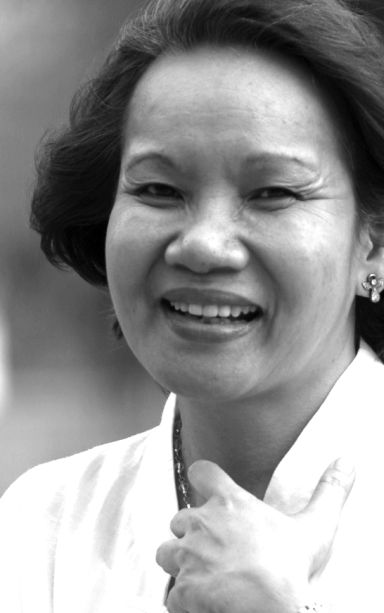
LOGARTA
My friend Fe reminded me that the Redemptorists sheltered the Santo Niño during the Second World War. This made me think of Fr. Jerry’s homily on the feast of Holy Innocents. He talked about the various activities of the parish for children including day cares and supporting tutorials for street children. Jason Baguia’s column here in CDN also pointed out Pope Benedict’s call for support for the world’s suffering children.
In the past, there had been a focus on children for the feast of the miraculous Holy Child. When we were celebrating it with a simple solemn procession, many parents who participated were carrying their children who must have experienced healing through the Holy Child. My niece and godchild religiously joined the novena and procession during her college student years up to her departure for work in another country. She was a child born from answered prayers to the Holy Child.
Perhaps we should include as an expression of devotion to Him a reflection accompanied by action for our children. Maybe, we should start by thinking of their needs and problems. A major problem is abandonment, neglect. From newspapers, we read of the Department of Social Welfare and
Development calling for the parents of abandoned children. What can we actually do about this? From TV viewing, I found out about a nongovernment organization MetroManila taking care of these infants and they were calling for part-time caregivers. They had a limited number of caregivers; but they believe in the value of the warmth of a hug, an embrace — infants need these for healthy development.
Sr. Vincent, RGS, is Alay Kapwa’s zealous solicitor for grants-in-aid for students of families with limited means to assist in completing their education. She connects Christians and other concerned persons from Japan and the US to the children of the Pier Area.
Dilaab Foundation has been helping street children with a holistic program to give rise to a sense of dignity and love for learning through enrichment sessions for their classes, catechism, baths and clean clothes, simple birthday celebrations, surrogate parenting for school follow-up.
I visited Children’s Legal Bureau, Inc. and interacted with Joan Saniel-Amit to have a refresher on CLB’s vision, mission and activities. Its vision is “to provide a just world for children”; and its mission: “CLB commits to empower children and communities while engaging with law enforcement, prosecution, corrections, courts, and local government units for the protection of rights and attainment of justice for the children of Cebu.”
Many obstacles stand in the way of realizing their vision and mission. Among the children a very important obstacle is “they do not know they are already abused/exploited.” In the case of the perpetrators, they are difficult to reach because they may be very far away (in the case of cybersex).
Usually, the parents or relatives get arrested. When perpetrators are present, they “bribe or threaten the victims so they will not pursue the case.”
Within the justice system “insensitivity of the barangay officials, police, prosecutors, judges” towards the child victims may ruin the case altogether.
“Community and school environment may cause stigma to the victims,” resulting in their withdrawal.
A big effort of CLB is to join very assertively in the campaign against lowering the minimum age of criminal responsibility of children in conflict with the law. They provided me with Intersect which provides helpful information regarding children in conflict with the law.
First it informs us that often, “a typical CICL is male between 14 and 17; has low educational attainment and has stopped schooling; uses drugs and alcohol; belongs to a family of six; is charged with a property-related crimes (e.g. theft).”
They usually come from families that are “poor or without stable once (57%); with separated parents (28.6 %); characterized by family or domestic violence (23.8 %).”
In the Juvenile Justice and Welfare Act of 2006, the minimum age of criminal responsibility is 15 years old. “This means that ‘a child fifteen years of age or under at the time of the commission of the offense shall be exempt from criminal liability.
However, the child shall be subjected to an intervention program.’” The law “still holds CICL accountable for their offenses, but in a different manner from adults.
Their age and developmental capacities are taken into consideration. The measures to assist children under the JJWA include: prevention, intervention, diversion, rehabilitation, and reintegration to the community.”
The strong opposition to lowering the minimum age of criminal responsibility is based on the idea that: the proposal to lower the MACR will require the infusion of substantial amount of public funds into a system that will more likely create chronic criminals out of our children.”
This Sto. Niño fiesta, may the Holy Child help me find the best way to express love and compassion for the needing little ones.
Disclaimer: The comments uploaded on this site do not necessarily represent or reflect the views of management and owner of Cebudailynews. We reserve the right to exclude comments that we deem to be inconsistent with our editorial standards.




